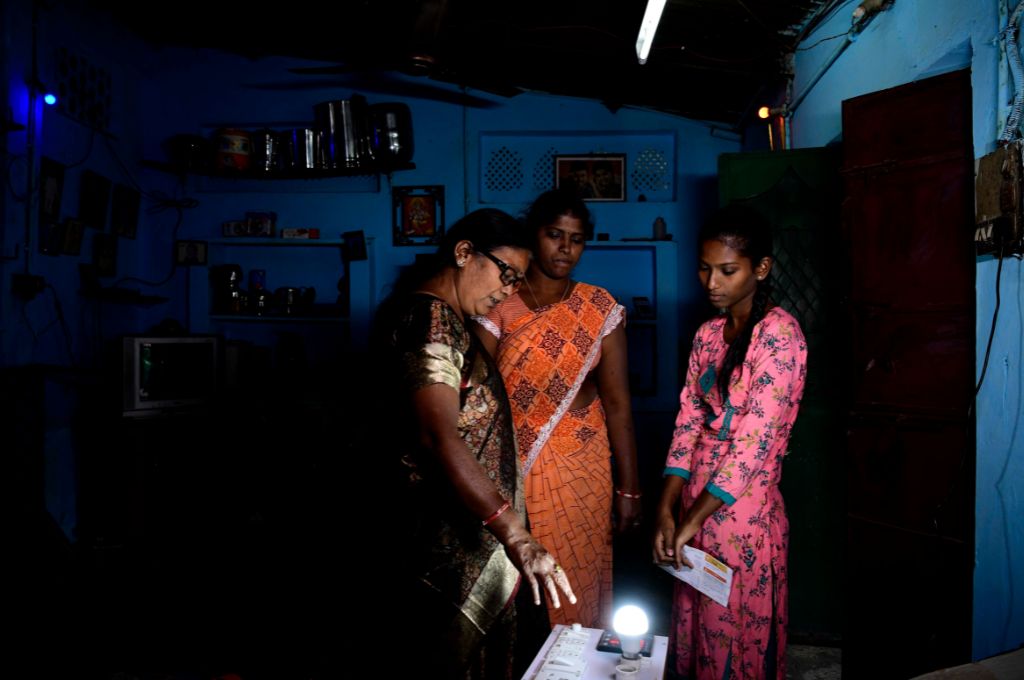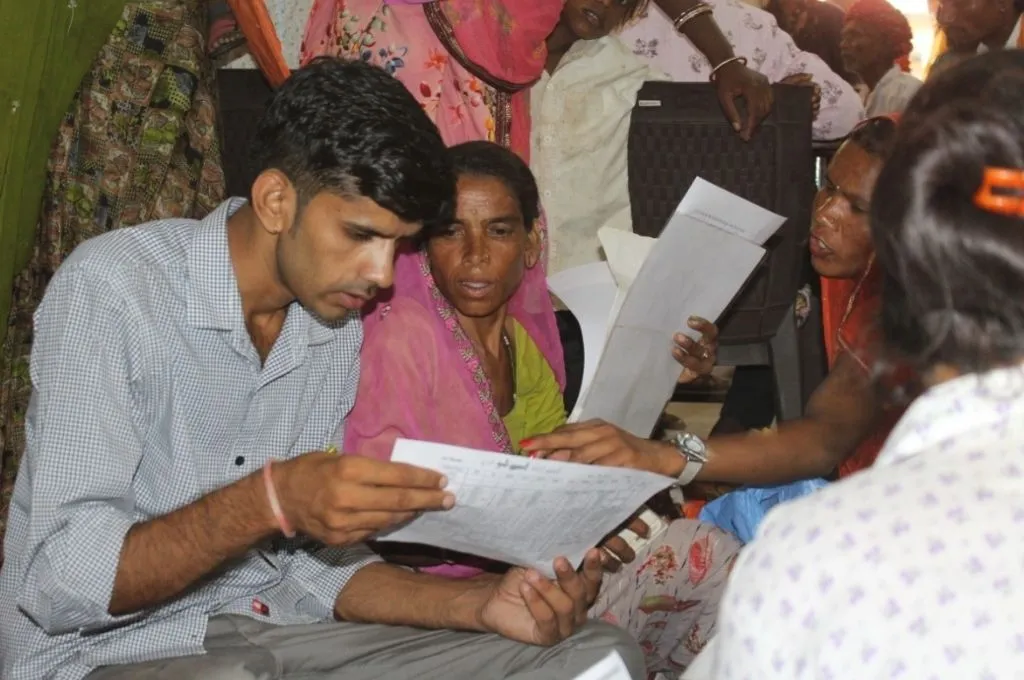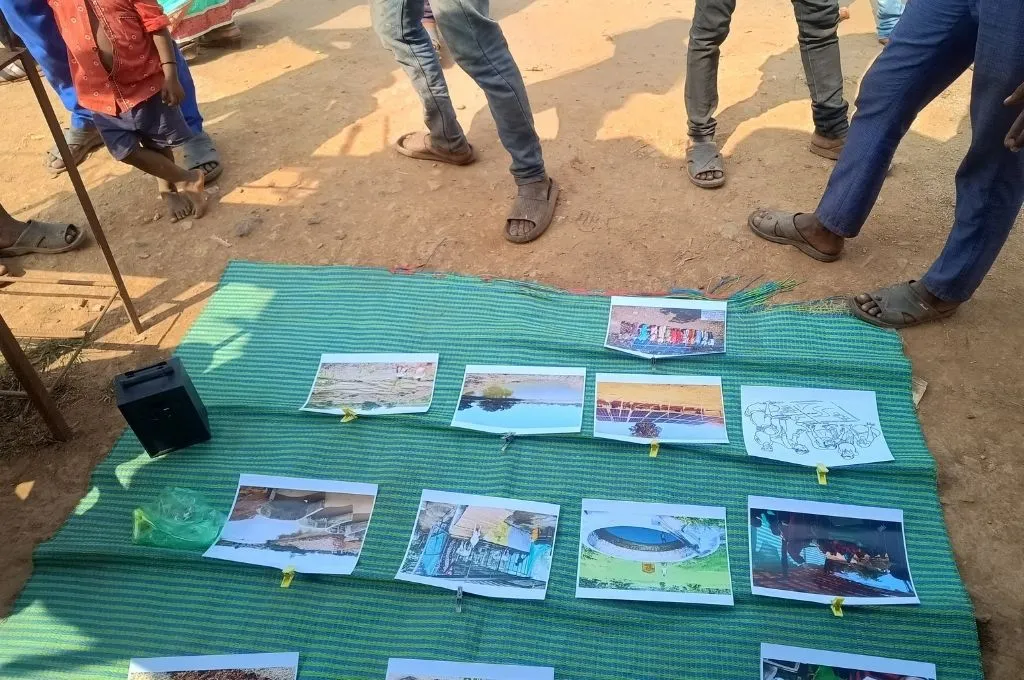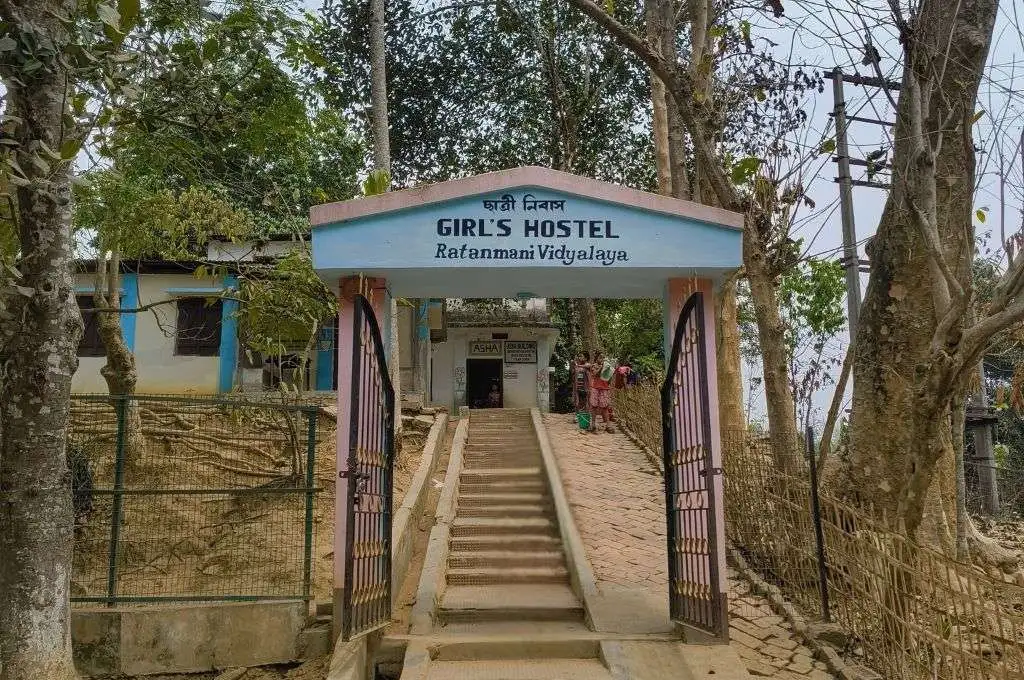Brighter homes, lighter bills: How Ahmedabad homes lowered their energy bills

When I moved to Ahmedabad after marriage, my husband and I lived in Madrasini chali, Meghaninagar, a small slum in Gujarat. We couldn’t access necessary amenities such as clean drinking water or individual toilets, neither did we have any electricity. Households that had an electricity meter would illegally sell the connection to 10–15 other households. Most of these houses had three to four electric points and paid a flat fee of INR 400 (INR 100 per point) to the local supplier.
The vigilance department frequently conducted raids in the neighbourhood, because they were aware of these illegal connections. As a result, our connections were regularly cut. Like many other women in the area, I worked from home. I packed bindis, and earned INR 100–150 a day. However, I would lose INR 400–500 every month because I couldn’t work on the days we lost electricity.
I was also working with the nonprofit Mahila Housing Trust (MHT) that provided households with several basic facilities. In 2001, through their Slum Electrification Programme, we obtained metered electricity connections in 1 lakh households. However, even after acquiring legal metered connections, people continued to use their lights and fans freely because they were accustomed to the flat monthly fee of INR 400. They were then shocked to see that their bills had doubled.
To understand why our bills ran so high and what we could do to lower them, I took part in MHT’s three-day training programme for energy auditors. I learned how to study a household’s lighting and cooling needs, review its monthly energy expenses, and recommend ways to reduce them. I also learned how to map out a house—noting the location of its door and windows, the direction of sunlight, the height of the ceiling, and the number and position of its electric points.
As an energy auditor, I started going door to door to audit people’s homes. I carried a wattmeter, a suitcase-like box with a three-pin plug socket and a switch, to help them understand the concept of wattage and energy efficiency. I’d plug the household’s bulbs and electric appliances, such as the fridge or TV, into the wattmeter and it would provide an accurate reading of their wattage. I would also carry LED bulbs to show them that they were brighter and more energy-efficient than the heat-emitting bulbs they used.
Based on the size of the house, I would recommend minor changes. For instance, most people used a tube light, but it would just light up one portion of their room. I recommended using bulbs instead—8 watt in one room and 5 watt in another. If a woman was working from home, I would suggest replacing a 100-watt tube light with a 5-watt bulb in a conical lamp. This not only gave her focused light while she worked, but also reduced the strain on her eyes.
At the end of the audit, I would share a list of recommended products they could upgrade to when the existing ones stopped working. People who made these changes would see the difference in their electricity bills and tell others in the community about us. I would then be called to audit their homes, summoned by the moniker I earned doing this work: Lightwali ben.
Krishnaben Mangalbhai Yadav works with Mahila Housing Trust as an energy auditor.
—
Know more: Read this article to know how climate change is affecting informal work in Ahmedabad.




